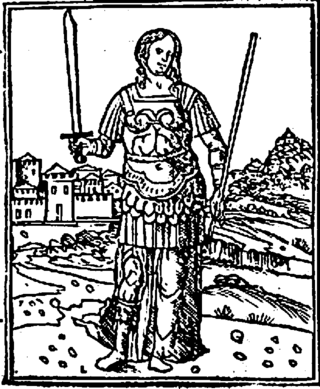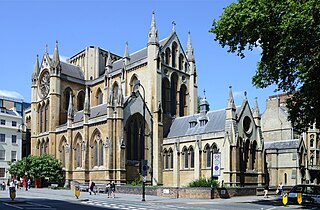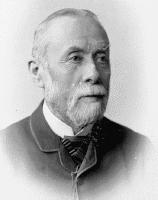Related Research Articles

Modern paganism, also known as contemporary paganism and neopaganism, spans a range of new religious movements variously influenced by the beliefs of pre-modern peoples across Europe, North Africa, and the Near East. Despite some common similarities, contemporary pagan movements are diverse, sharing no single set of beliefs, practices, or religious texts. Scholars of religion may study the phenomenon as a movement divided into different religions, while others study neopaganism as a decentralized religion with an array of denominations.

Paganism is a term first used in the fourth century by early Christians for people in the Roman Empire who practiced polytheism, or ethnic religions other than Judaism. In the time of the Roman Empire, individuals fell into the pagan class either because they were increasingly rural and provincial relative to the Christian population, or because they were not milites Christi. Alternative terms used in Christian texts were hellene, gentile, and heathen. Ritual sacrifice was an integral part of ancient Greco-Roman religion and was regarded as an indication of whether a person was pagan or Christian. Paganism has broadly connoted the "religion of the peasantry".

British Israelism is a pseudo-historical belief that the people of Great Britain are "genetically, racially, and linguistically the direct descendants" of the Ten Lost Tribes of ancient Israel. With roots in the 16th century, British Israelism was inspired by several 19th century English writings such as John Wilson's 1840 Our Israelitish Origin. From the 1870s onward, numerous independent British Israelite organizations were set up throughout the British Empire as well as in the United States; as of the early 21st century, a number of these organizations are still active. In the United States, the idea gave rise to the Christian Identity movement.

Semiramis was the legendary Lydian-Babylonian wife of Onnes and of Ninus, who succeeded the latter on the throne of Assyria, according to Movses Khorenatsi. Legends narrated by Diodorus Siculus, who drew primarily from the works of Ctesias of Cnidus, describe her and her relationships to Onnes and King Ninus.

Archangels are the second-lowest rank of angel in the Christian hierarchy of angels, put forward by Pseudo-Dionysius the Areopagite in the 5th or 6th century in his book De Coelesti Hierarchia. However, they are the highest rank to interact directly with humans, seraphim and the like remaining close to God.

Babylon the Great, commonly known as the Whore of Babylon, refers to both a symbolic female figure and a place of evil as mentioned in the Book of Revelation of the New Testament. Her full title is stated in Revelation 17:5 as "Mystery, Babylon the Great, the Mother of Harlots and Abominations of the Earth".
A carol is a festive song, generally religious but not necessarily connected with Christian church worship, and sometimes accompanied by a dance. A caroller is someone who sings carols, and is said to be carolling.

A tetramorph is a symbolic arrangement of four differing elements, or the combination of four disparate elements in one unit. The term is derived from the Greek tetra, meaning four, and morph, shape.
An apostolic see is an episcopal see whose foundation is attributed to one or more of the apostles of Jesus or to one of their close associates. In Catholicism, the phrase "The Apostolic See" when capitalized refers specifically to the See of Rome.

The Catholic Apostolic Church (CAC), also known as the Irvingian Church or Irvingite Church, is a denomination in the Restorationist branch of Christianity. It originated in Scotland around 1831 and later spread to Germany and the United States. The tradition to which the Catholic Apostolic Church belongs is sometimes referred to as Irvingism or the Irvingian movement after Edward Irving (1792–1834), a clergyman of the Church of Scotland credited with organising the movement.
Pope Avilius of Alexandria, was the 3rd Patriarch of Alexandria.

Alexander Hislop was a Free Church of Scotland minister known for his criticisms of the Catholic Church. He was the son of Stephen Hislop, a mason by occupation and an elder of the Relief Church. Alexander's brother was also named Stephen Hislop and became well known in his time as a missionary to India and a naturalist.

The Two Babylons, subtitled Romanism and its Origins, is a book that started out as a religious pamphlet published in 1853 by the Presbyterian Free Church of Scotland theologian Alexander Hislop (1807–65).
Ralph Edward Woodrow is an Evangelical Christian minister, speaker and presently the author of sixteen books. Woodrow formerly supported the thesis of 19th century Presbyterian minister, Alexander Hislop, that Roman Catholicism is a syncretistic pagan religion in his book Babylon Mystery Religion and gained a certain notoriety when he changed his view and pulled the work from circulation. His new viewpoint is documented in The Babylon Connection?.

Religion in England is characterised by a variety of beliefs and practices that has historically been dominated by Christianity. Christianity remains the largest religion, though it makes up less than half of the population. As of the 2021 census, there is an increasing variety of beliefs, with irreligious people outnumbering each of the other religions. The Church of England is the nation's established state church, whose supreme governor is the monarch. Other Christian traditions in England include Roman Catholicism, Methodism, Presbyterianism, Mormonism, and the Baptists. After Christianity, the religions with the most adherents are Islam, Hinduism, Sikhism, Judaism, Buddhism, modern paganism, and the Bahá'í Faith. There are also organisations promoting irreligion, including humanism and atheism. According to the 2021 census, Shamanism is the fastest growing religion in England.

James George Roche Forlong was a Major General of the Indian Army who trained as a civil engineer in Scotland and England. He was renowned for his road-building skills through the jungles of India and Burma and for his studies on comparative religion.

The following outline is provided as an overview of and topical guide to Christianity:
The Catholic Church has been criticised in fiction, such as literature, film and television. Polemics have also been written on the Church and its practices. Some examples are the anti-Catholic stereotypes that filled Gothic fiction of Anglican England, the films of Luis Buñuel who took issue with the Church in Spain, the humor of some US television pundits like Rosie O'Donnell, and the rhetoric of some fundamentalist preachers.
The restoration of paganism from Julian until Valens was a brief period, from 361 until 375, of relative tolerance towards pagans in the Roman Empire. In the late Roman Empire, it was preceded by a period of persecutions under Emperor Constantius II and was followed by those of Emperor Gratian. The attempt of Emperor Julian the Apostate to restore pagan worship in the empire, while ultimately a policy failure, restored security to pagans. His immediate successors, under the reigns of Jovian, Valens and Valentinian I, had a policy of relative religious toleration towards paganism.
References
- ↑ Woodrow, Ralph (May 1, 2005). "Did the Catholic Church Have Its Origin in Paganism?". Catholic Answers . Retrieved September 1, 2022.